Objetivo
Lithography based additive manufacturing technologies (L-AMT) are capable of fabricating parts with excellent surface quality, good feature resolution and precision. ToMax aims at developing integrated lithography-based additive manufacturing systems for the fabrication of ceramic parts with high shape complexity. The focus of the project is to unite industrial know-how in the field of software development, photopolymers and ceramics, high-performance light-sources, system integration, life cycle analysis, industrial exploitation and rewarding end-user cases.
The consortium will provide 3D-printers with high throughput and outstanding materials and energy efficiency. The project is clearly industrially driven, with 8 out of 10 partner being SMEs or industry.
Targeted end-use applications include ceramics for aerospace engineering, medical devices and energy efficient lighting applications. The consortium is aiming to exploit disruptive applications of L-AMT by developing process chains beyond the current state of the art, with the dedicated goal to provide manufacturing technologies for European Factories of the Future.
By relying on L-AMT, ToMax the following objectives are targeted:
(1) ToMax will provide methods which are 75% more material efficient with respect to traditional manufacturing
(2) Are 25% more material efficient with respect to current AMT approaches by using computational modelling to optimize geometries and by providing recyclable wash-away supports.
(3) ToMax will provide methods which are 35% more energy efficient that current AMT approaches by developing 50% faster thermal processing procedures.
(4) Incorporate recycling for the first time in L-AMT of engineering ceramics
Overall, the consortium will provide innovative, resource efficient manufacturing processes. ToMax will develop energy-efficient machinery and processes, with a focus on manufacturing of alumina, silicon nitride and cermet parts with high shape complexity.
Ámbito científico (EuroSciVoc)
CORDIS clasifica los proyectos con EuroSciVoc, una taxonomía plurilingüe de ámbitos científicos, mediante un proceso semiautomático basado en técnicas de procesamiento del lenguaje natural. Véas: El vocabulario científico europeo..
CORDIS clasifica los proyectos con EuroSciVoc, una taxonomía plurilingüe de ámbitos científicos, mediante un proceso semiautomático basado en técnicas de procesamiento del lenguaje natural. Véas: El vocabulario científico europeo..
- ingeniería y tecnología ingeniería ambiental gestión ecosistémica mitigación del cambio climático
- ingeniería y tecnología ingeniería mecánica ingeniería de vehículos ingeniería aeroespacial
- ciencias naturales ciencias químicas química inorgánica metaloides
- ingeniería y tecnología ingeniería mecánica ingeniería de fabricación fabricación aditiva
- ingeniería y tecnología ingeniería de materiales cerámica
Para utilizar esta función, debe iniciar sesión o registrarse
Le pedimos disculpas, pero se ha producido un error inesperado durante la ejecución.
Necesita estar autentificado. Puede que su sesión haya finalizado.
Gracias por su comentario. En breve recibirá un correo electrónico para confirmar el envío. Si ha seleccionado que se le notifique sobre el estado del informe, también se le contactará cuando el estado del informe cambie.
Programa(s)
Programas de financiación plurianuales que definen las prioridades de la UE en materia de investigación e innovación.
Programas de financiación plurianuales que definen las prioridades de la UE en materia de investigación e innovación.
-
H2020-EU.2.1.5. - INDUSTRIAL LEADERSHIP - Leadership in enabling and industrial technologies - Advanced manufacturing and processing
PROGRAMA PRINCIPAL
Ver todos los proyectos financiados en el marco de este programa -
H2020-EU.2.1.5.1. - Technologies for Factories of the Future
Ver todos los proyectos financiados en el marco de este programa
Tema(s)
Las convocatorias de propuestas se dividen en temas. Un tema define una materia o área específica para la que los solicitantes pueden presentar propuestas. La descripción de un tema comprende su alcance específico y la repercusión prevista del proyecto financiado.
Las convocatorias de propuestas se dividen en temas. Un tema define una materia o área específica para la que los solicitantes pueden presentar propuestas. La descripción de un tema comprende su alcance específico y la repercusión prevista del proyecto financiado.
Régimen de financiación
Régimen de financiación (o «Tipo de acción») dentro de un programa con características comunes. Especifica: el alcance de lo que se financia; el porcentaje de reembolso; los criterios específicos de evaluación para optar a la financiación; y el uso de formas simplificadas de costes como los importes a tanto alzado.
Régimen de financiación (o «Tipo de acción») dentro de un programa con características comunes. Especifica: el alcance de lo que se financia; el porcentaje de reembolso; los criterios específicos de evaluación para optar a la financiación; y el uso de formas simplificadas de costes como los importes a tanto alzado.
RIA - Research and Innovation action
Ver todos los proyectos financiados en el marco de este régimen de financiación
Convocatoria de propuestas
Procedimiento para invitar a los solicitantes a presentar propuestas de proyectos con el objetivo de obtener financiación de la UE.
Procedimiento para invitar a los solicitantes a presentar propuestas de proyectos con el objetivo de obtener financiación de la UE.
(se abrirá en una nueva ventana) H2020-FoF-2014-2015
Ver todos los proyectos financiados en el marco de esta convocatoriaCoordinador
Aportación financiera neta de la UE. Es la suma de dinero que recibe el participante, deducida la aportación de la UE a su tercero vinculado. Considera la distribución de la aportación financiera de la UE entre los beneficiarios directos del proyecto y otros tipos de participantes, como los terceros participantes.
1040 Wien
Austria
Los costes totales en que ha incurrido esta organización para participar en el proyecto, incluidos los costes directos e indirectos. Este importe es un subconjunto del presupuesto total del proyecto.


